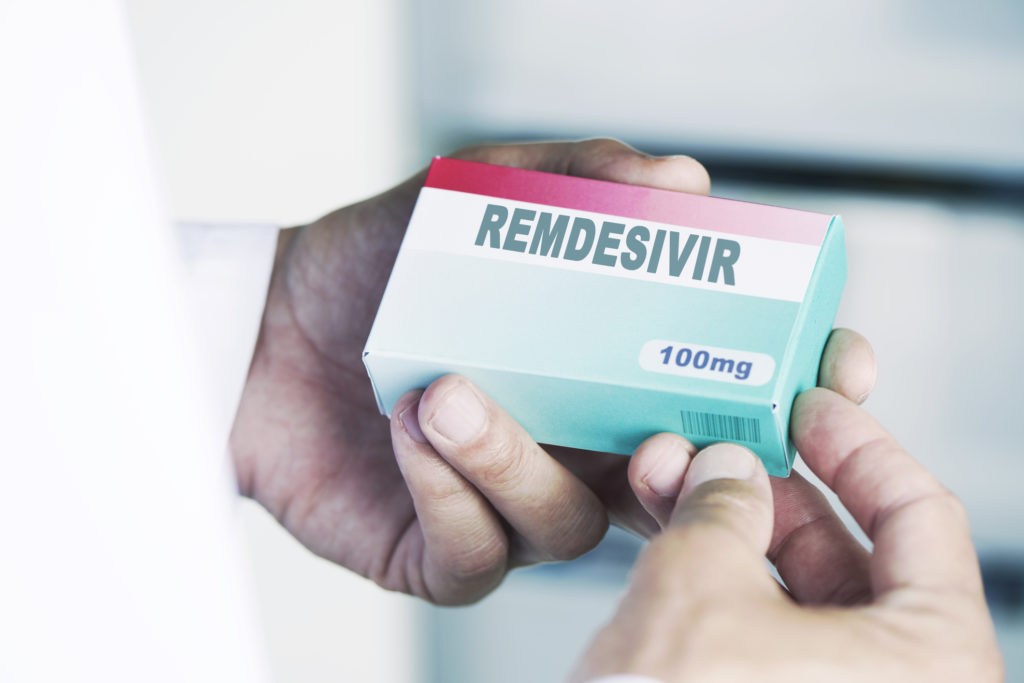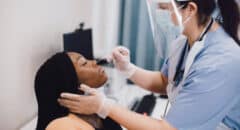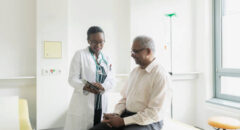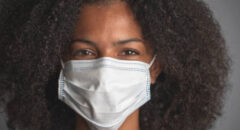
In a time that has nearly the whole world waiting for a cure to get back to "normal", the U.S. Food and Drug Administration just approved the antiviral drug Veklury (remdesivir) for use in adult and pediatric patients 12 years of age and older and weighing at least 40 kilograms (about 88 pounds) for the treatment of COVID-19 requiring hospitalization.
This approval does not include the entire population that had been authorized to use Veklury under an Emergency Use Authorization (EUA) originally issued on May 1, 2020.
In order to ensure continued access to the pediatric population previously covered under the EUA, the FDA revised the EUA for Veklury to authorize the drug’s use for treatment of suspected or laboratory confirmed COVID-19 in hospitalized pediatric patients weighing 3.5 kg to less than 40 kg or hospitalized pediatric patients less than 12 years of age weighing at least 3.5 kg.
Clinical trials assessing the safety and efficacy of Veklury in this pediatric patient population are ongoing.
“The FDA is committed to expediting the development and availability of COVID-19 treatments during this unprecedented public health emergency,” said FDA Commissioner Stephen M. Hahn, M.D. “Today’s approval is supported by data from multiple clinical trials that the agency has rigorously assessed and represents an important scientific milestone in the COVID-19 pandemic.
As part of the FDA’s Coronavirus Treatment Acceleration Program, the agency will continue to help move new medical products to patients as soon as possible, while at the same time determining whether they are effective and if their benefits outweigh their risks.”
Remdesivir seems to be most effective relatively early on for hospitalized patients with severe Covid-19. To help beat back the illness, it interferes with how SARS-CoV-2, the virus that causes Covid-19, makes copies of itself.
The virus uses genetic instructions in the form of RNA, written in a code made of molecules represented by the letters A, U, G, and C. The drug mimics the molecule represented by A, adenosine.
The fake adenosine blocks the virus from copying itself but doesn’t fool human cells. The result is the virus can’t reproduce as much within a patient’s body.
The antiviral drug was originally developed to treat the Ebola virus, and it has received a hefty investment from the US government over almost two decades, as Ekaterina Cleary, lead data analyst and research associate at the Center for Integration of Science and Industry, wrote in a piece for Stat News:
Research from the Center for Integration of Science and Industry, with which I am affiliated, determined that between gathering knowledge behind remdesivir’s chemical structure and molecular target, the NIH invested as much as $6.5 billion between 2000 and 2019.
Remdesivir treatment is not without risks. It has been shown to cause some side effects in some people, such as elevated liver enzymes, which could indicate liver damage.
The drug can also trigger allergic reactions, resulting in fever, shortness of breath, wheezing, swelling, low blood oxygen, and changes in blood pressure.
For a patient with private insurance, the intravenous drug can cost $3,120 for a five-day course of treatment.
Note: Veklury should only be administered in a hospital or in a healthcare setting capable of providing acute care comparable to inpatient hospital care.
Veklury is the first treatment for COVID-19 to receive FDA approval.
Under the Federal Food, Drug, and Cosmetic Act, approval of a new drug product requires substantial evidence of effectiveness and a demonstration of safety for the drug’s intended use(s).
In considering approval of a drug, the FDA conducts a benefit-risk assessment based on rigorous scientific standards to ensure that the product’s benefits outweigh its risks for the intended population.
This is different from the standard used in the issuance of an EUA.
The approval of Veklury was supported by the agency’s analysis of data from three randomized, controlled clinical trials that included patients hospitalized with mild-to-severe COVID-19.
One randomized, double-blind, placebo-controlled clinical trial (ACTT-1), conducted by the National Institute of Allergy and Infectious Diseases, evaluated how long it took for subjects to recover from COVID-19 within 29 days of being treated.
The trial looked at 1,062 hospitalized subjects with mild, moderate and severe COVID-19 who received Veklury (n=541) or placebo (n=521), plus standard of care.
Recovery was defined as either being discharged from the hospital or being hospitalized but not requiring supplemental oxygen and no longer requiring ongoing medical care.
The median time to recovery from COVID-19 was 10 days for the Veklury group compared to 15 days for the placebo group, a statistically significant difference.
Overall, the odds of clinical improvement at Day 15 were also statistically significantly higher in the Veklury group when compared to the placebo group.
A second randomized, open-label multi-center clinical trial of hospitalized adult subjects with moderate COVID-19 compared treatment with Veklury for five days (n=191) and treatment with Veklury for 10 days (n=193) with standard of care (n=200).
Researchers evaluated the clinical status of subjects on Day 11. Overall, the odds of a subject’s COVID-19 symptoms improving were statistically significantly higher in the five-day Veklury group at Day 11 when compared to those receiving only standard of care.
The odds of improvement with the 10-day treatment group, when compared to those receiving only standard of care were, numerically favorable, but not statistically significantly different.
A third separate, randomized, open-label multi-center clinical trial of hospitalized adult subjects with severe COVID-19 compared treatment with Veklury for five days (n= 200) and treatment with Veklury for 10 days (n= 197).
Researchers evaluated the clinical status of subjects on Day 14. Overall, the odds of a subject’s COVID-19 symptoms improving were similar for those in the five-day Veklury group as those in the 10-day Veklury group, and there were no statistically significant differences in recovery rates or mortality rates between the two groups.









